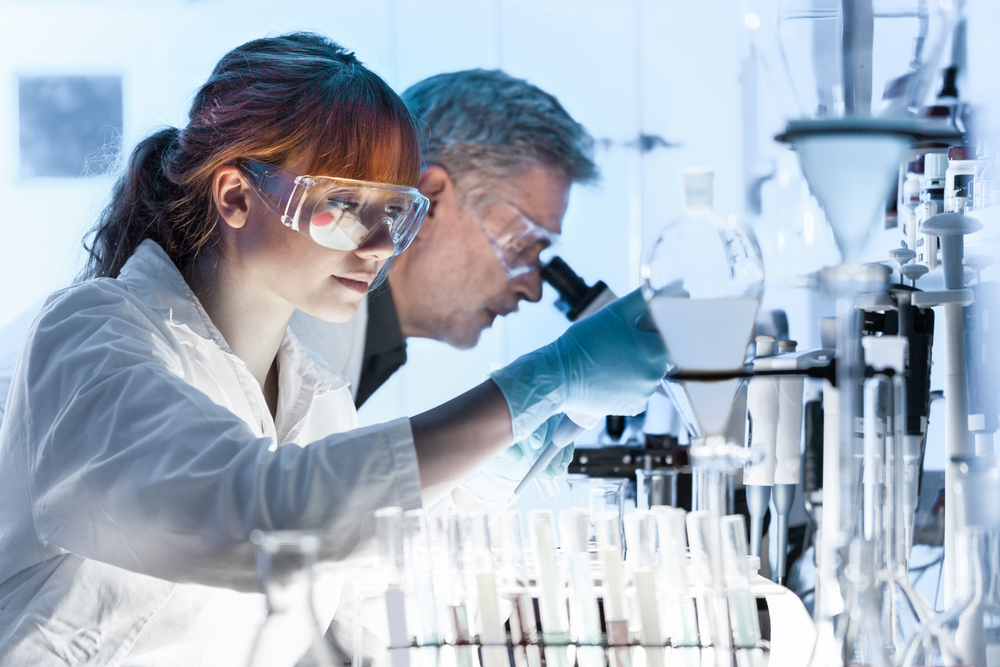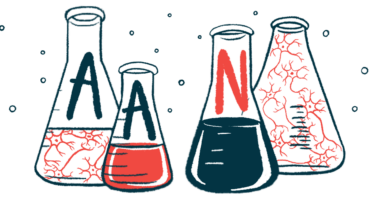Scientists Create 3-D Model to Study Neuromuscular Disorders, Including Myasthenia Gravis

Scientists have created — in a lab dish — a three-dimensional model system made of human neurons and muscle cells that can be used to study neuromuscular disorders, including myasthenia gravis.
The new model is described in the study, “Self-Organizing 3D Human Trunk Neuromuscular Organoids,” published in the journal Cell Stem Cell.
Neuromuscular diseases are complex disorders that may arise from defects in the nervous system, skeletal muscles, or in the interface between them, at the level of the neuromuscular junction (NMJ) — the place where neurons and muscle fibers communicate to control movement.
Devising adequate cellular models that would be able to mimic the high level of complexity of these disorders in a lab dish has been a challenge for scientists.
But now, researchers from the Max Delbrück Center for Molecular Medicine in the Helmholtz Association (MDC) in Berlin, Germany, developed a new three-dimensional model system, called neuromuscular organoids (NMOs), that can be used to study NMJs and the disorders that affect them, in a lab dish.
NMOs are made of human neurons and muscle fibers, both derived from axial stem cells, that self-organize in order to form these small organ-like structures, which can be maintained for several months in the lab. Of note, axial stem cells are undifferentiated cells that are known to give rise to both neurons and skeletal muscle cells during embryo development.
One of the biggest advantages of these NMOs is their ability to form functional NMJs, which was possible only because neurons and muscle cells inside these organoids developed simultaneously from the same pool of progenitor cells.
“By combining the potential of stem cells with the powerful organoid technology, neuromuscular organoids present an exciting model to study neuromuscular diseases as well as a robust model for developmental studies where the formation of complex neuromuscular circuitry can be analyzed in real time in 3D microenvironment closer to the one present in the embryo,” Jorge-Miguel Faustino Martins, a PhD student and first author of the study, said in a news story on the MDC website.
The team also found that NMJs formed inside these NMOs contained Schwann cells — specialized cells that produce the fatty substance (myelin) that protects nerve cells, which are essential for the normal activity of NMJs.
In addition to functional NMJs, these organoids also were able to give rise to complex neural circuits resembling the central pattern generator (CPG) circuits, which are responsible for controlling rhythmic body movements, including those occurring while breathing and walking.
“Our initial goal was to develop functional neuromuscular junctions, but the findings exceeded our expectations because the additional development of the CPG-like networks was an exciting but unexpected finding,” said Mina Gouti, PhD, group leader of the Stem Cell Modeling of Development and Disease Lab at the MDC and senior author of the study.
“This has not been shown in a human in vitro model before, and offers entirely novel possibilities, including the study of CPG involvement in neurodegenerative diseases,” Gouti said.
NMOs grew to approximately six millimeters in diameter and started contracting after being kept in culture for 40 days. Investigators also demonstrated the contraction was driven by a neurotransmitter — chemical substances that allow communication between nerve cells — called acetylcholine, rather than by spontaneous muscle contraction seen in previous models.
Finally, to assess if these NMOs could be used to study neuromuscular disorders, the group gathered serum samples from two patients with myasthenia gravis (MG), a neuromuscular disorder in which harmful autoantibodies target and destroy important components of the NMJs, and put them in contact with cultured organoids.
After three days, NMOs treated with serum samples from MG patients lost part of their ability to contract, mimicking the muscle weakness experienced by patients with the disease.
“These findings recapitulate key aspects of disease pathology [development] suggesting that the neuromuscular organoids can reliably model neuromuscular disorders,” said Simone Spuler, MD, researcher at the Charité Hospital Muscle Research Unit and co-author of the study.
Next steps in research include generating these type of organoids from induced pluripotent stem cells (iPSCs) derived from patients with neuromuscular diseases to assess the effectiveness of different medications and to develop new personalized medicine strategies. iPSCs are fully matured cells that can be reprogrammed back to a stem cell state, where they are able to grow into almost any type of cell.






